Metal casting is the process of creating metal parts by pouring molten metal into an empty-shaped space (mold). The molten metal cools down inside the mold cavity, forming the part.
This article will teach you what metal casting is used for and the various forms of metal casting process.
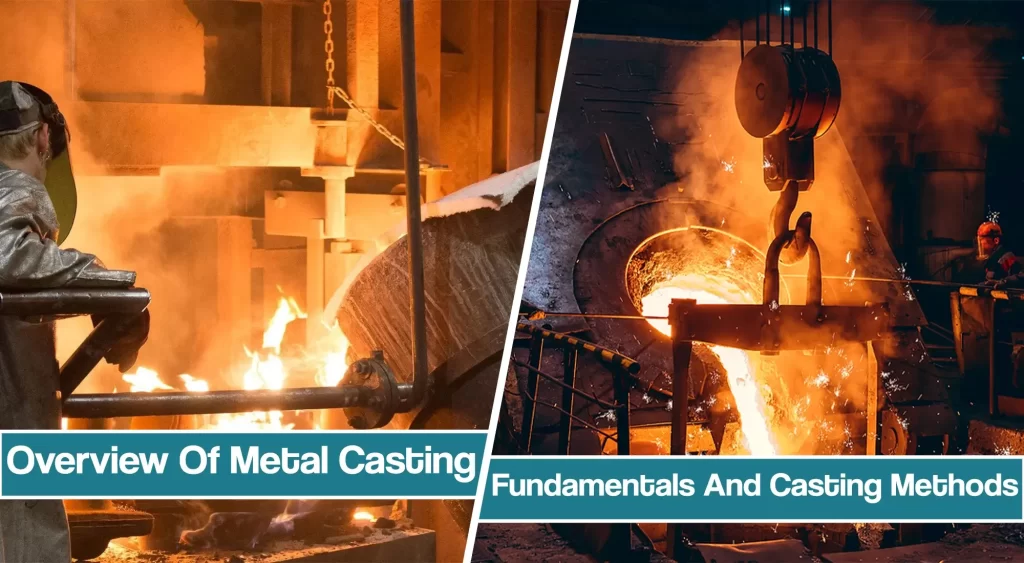
What is metal casting used for?
The metal casting process is significantly cheaper than machining metal parts out of solid metal. This process has been used for over 7,000 years to create sculptures, tools, and weapons. Today, most castings produced are used in the transportation and heavy equipment industry.
But, metal casting is also used to create fine jewelry, art, electrical components, farming equipment, defense weapons and tools, machining parts, construction equipment, and household appliances.
The metal casting processes have become more advanced and prevalent in the modern age. However, the most widely used metal casting methods are sand casting and die casting. So, let’s explore all of the different types of metal casting below.
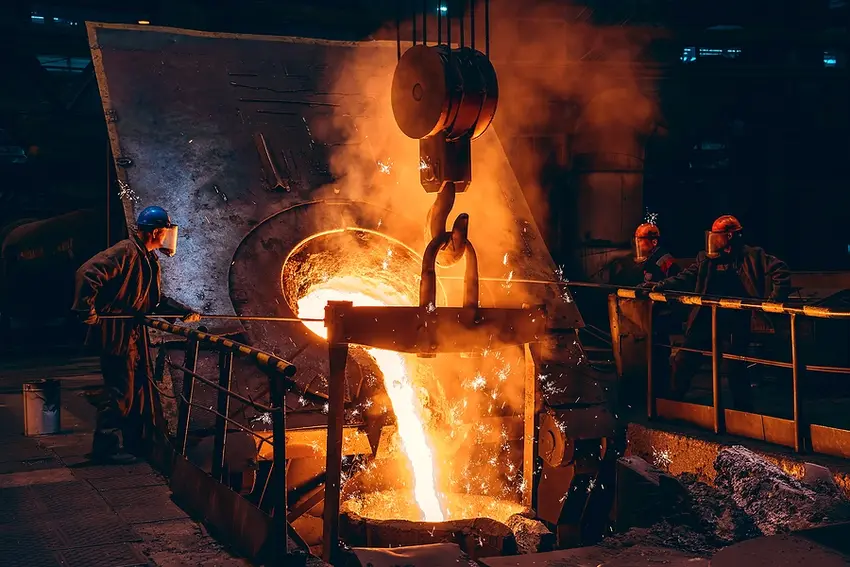
Different types of metal casting
We can separate the metal casting processes into two primary groups: expendable mold casting processes (single-use mold) and non-expendable mold casting processes (mold is reused).
Both metal casting types operate by the same principle — the molten metal is poured from the crucible into a mold, and after the metal cools, the caster removes the mold material or the casting.
Expendable Mold Casting
Expendable mold casting methods rely on single-use or temporary molds. The sand casting method is the most prevalent, but ceramic shell molding, plaster investment, or foam casting are also used.
Expendable mold processes can be used to create very complex shapes. So, quite often, you don’t need to rely on anything other than molding sand and a suitable bonding agent.
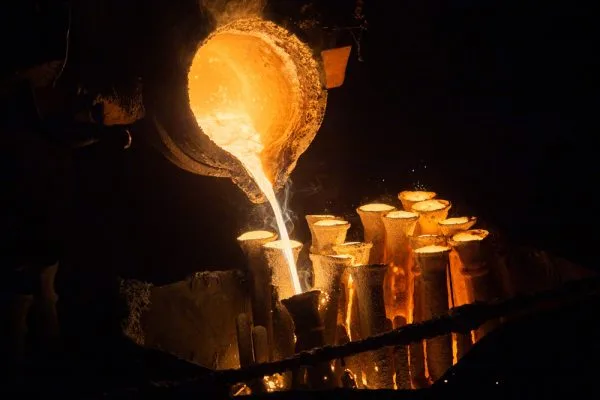
The single-use molds are inexpensive to make, but they work best for low-volume production or the creation of a single part. Hobbyists in forging and foundry often use sand casting; it’s straightforward to set up and requires little previous experience.
Sand Casting
Sand casting is the most prevalent metal casting method. It has been used for centuries. So, unless you have a good reason to use any other metal casting process, just stick to sand casting.
Producing metal parts using sand casting is very inexpensive, takes little skills and basic equipment, and you can make tiny parts or huge elements like a train car bed, for example.
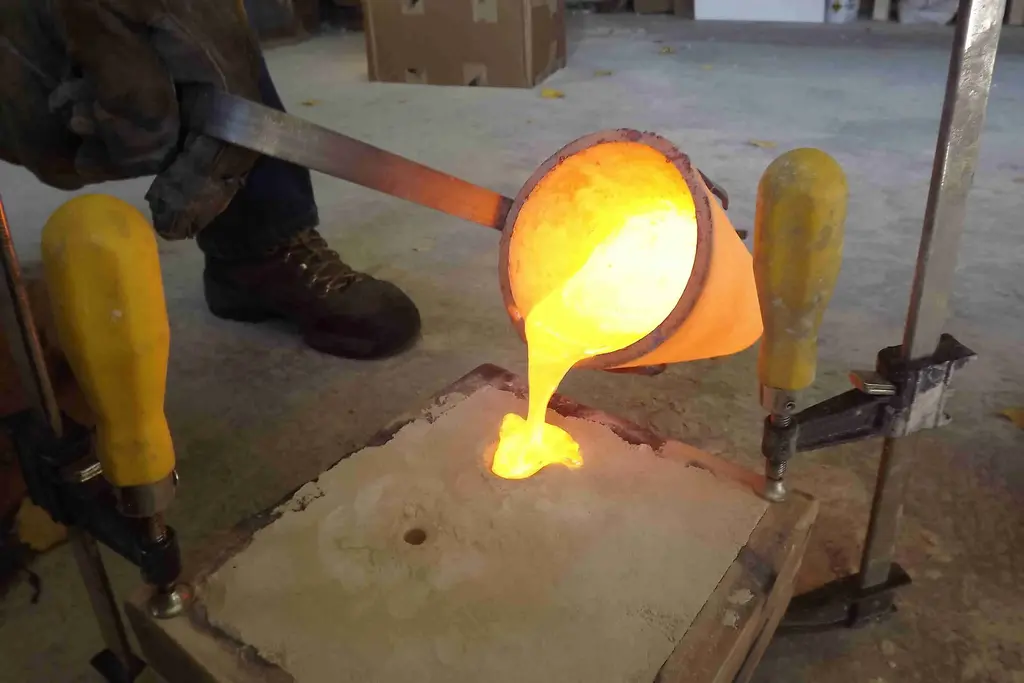
Sand casting is not often used for large volume production because this is a slow process. But, it’s unsurpassed for large parts. The sand selection depends on the type of metal you wish to cast, but it’s possible to cast almost all metals with this process.
To improve sand bonding, agents like clays, chemical binders, and polymerized oils are added to the sand.
Plaster Mold Casting
Plaster mold casting is similar to sand casting, except that the plaster casting creates a smoother finish surface of the molded metal parts. As a result, it takes less work to finish the part post-molding.
However, the plaster casting process can only be used with low melting point non-ferrous metals like copper, aluminum, magnesium, and zinc. This is also an inexpensive process, but it takes more effort because the plaster must be mixed and baked. Additionally, there are more health hazards involved with plaster casting.
Shell Molding
Shell molding is a modified sand casting process that uses fine sand mixed with resin. After the shape forms in the cavity, the heat is applied, which creates a hard shell around it.
As a result, the shell molding produces a much more refined surface finish than typical sand casting. Additionally, this process is easier to automate and creates more precise casted parts.
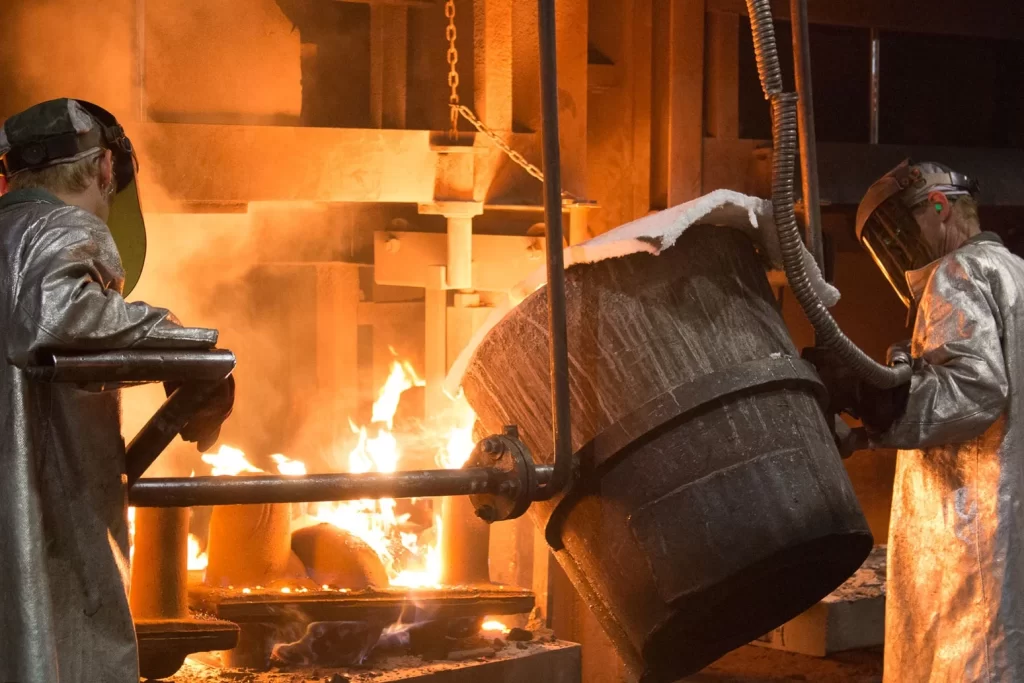
Most commonly cast metals are cast iron, magnesium, copper, and aluminum. And the size of elements ranges from small to medium.
Investment Casting
Investment casting also referred to as the lost wax casting process, is one of the oldest metal casting processes used in various forms in the last 5,000 years. Today, it’s used to create complex machine parts, cooling systems, turbine blades, and multiple elements in the aerospace industry.
This process first requires creating a wax pattern using a die-cast method, which we’ll discuss later in the article. This wax pattern (part to be molded) is “invested” with refractory material (coated over wax in multiple layers).
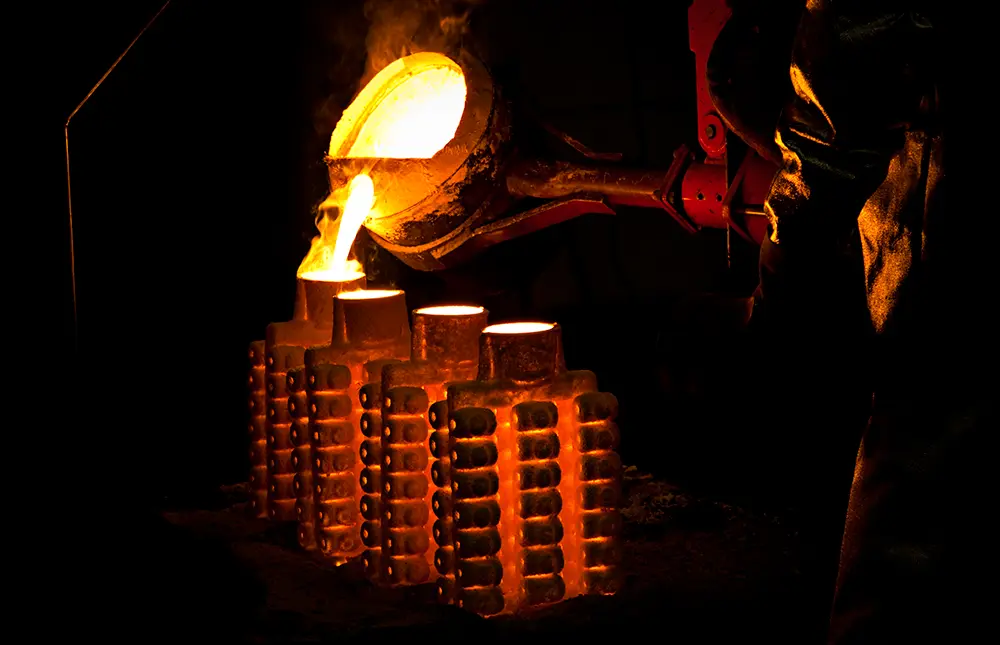
The wax is burned in special ovens upon cooling, leaving thin walls of refractory material as a metal casting mold.
Evaporative-pattern Casting
Evaporative-pattern casting processes are similar to investment casting, but they do not require the removal of the pattern before casting. Instead, the pattern evaporates as the molten metal is poured into the casting cavity.
Lost-foam Casting
The lost-foam casting process is nearly identical to the investment casting. A polystyrene foam pattern is coated with refractory material, but instead of burning the foam before the casting process begins, the foam is left in the newly formed mold. Once the molten metal is poured into the mold, the polystyrene evaporates, and the part is formed.
Full-mold Casting
Full-mold evaporative-pattern casting is a combination of using a standard sand casting process and the lost-foam casting process. A polystyrene foam pattern is surrounded by sand in the mold, and instead of removing the model, the molten metal is introduced. The foam evaporates, leaving the newly formed metal cast element.
Non-expendable Mold Casting
The non-expendable mold casting processes don’t destroy the casting mold in the process. Instead, the molds are reusable, allowing serial production. Additionally, these casting processes create metal castings with excellent finish surfaces — very little post-casting work is required.
Gravity Mold Casting
A typical permanent mold casting process uses a metal mold and gravity to fill the mold cavity with molten metal. This process limits the cast shape complexity because the mold must be opened, and gravity is not a sufficient force to fill complex molds.
Pressurized or vacuum casting chambers are employed to improve possible metal casting complexity.
Die Casting
Die casting forces molten metal into a metal mold cavity under extreme pressures ranging between 0.7 and 700 MPa depending on the part size, metal casting type, and complexity. Very complex shapes are made using the die casting process — this is one of the most widely used metal casting methods in the casting industry today.
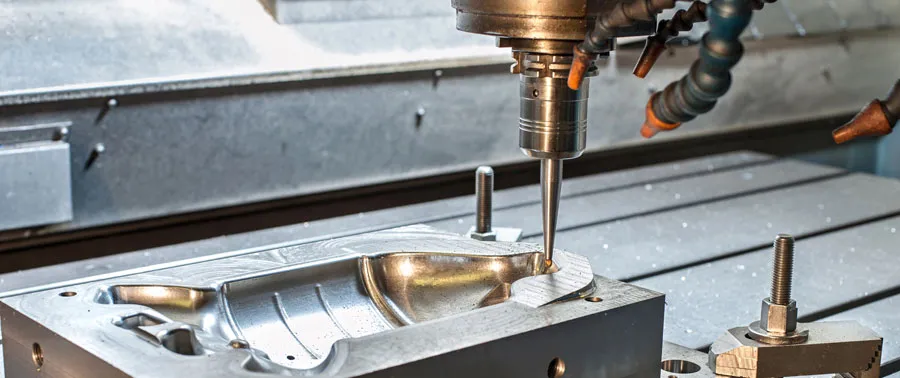
But, die casting is an expensive process, which limits it to high-volume production. However, the cost per cast part is very low, further justifying the die casting process use in high-volume production.
Thanks to high pressure, the surface finish of metal casting is excellent, and the dimensional consistency is constant.
Die casting is used for aluminum, copper, zinc, lead, tin, magnesium, and sometimes ferrous metal casting.
Semi-solid Metal Casting
The semi-solid metal casting process is a modified die casting process. Instead of using a fully liquid metal to cast a metal object, this process uses a higher viscosity metal that’s partially liquid and partially solid. This metal die casting process uses special die casting machines to inject semi-solid material into reusable molds and produce castings.
The standard die casting process, which uses hot metal, sometimes results in localized porosity of cast parts.
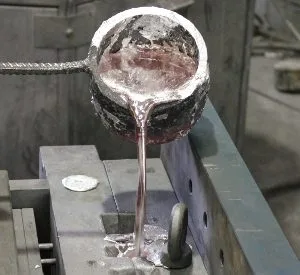
So, to avoid this issue, rather viscous liquid metals are injected instead. The semi-solid metal casting is primarily used for casting metals like aluminum and magnesium. The biggest advantage of the SSM process is the increased strength and ductility thanks to minimal porosity in the final casting.
Centrifugal Casting
Centrifugal casting consists of many metal casting procedures that use a rotational centrifugal force to move the molten metal to the outer parts of the circular mold cavity. The metal solidifies as the mold rotates. The inertial force throws the molten metal to the mold periphery, making the centrifugal casting method gravity and pressure independent.
Conclusion
Metal casting is still one of the essential methods of fabricating metal elements. Permanent mold casting is the most prevalent in the production industries, but expendable metal casting is also often used, especially for low production volume.
Resources:
- Metal Casting by Massachusetts Institute of Technology
- History and Trends of Metal Casting By Thomas E. Prucha ; Daniel Twarog ; Raymond W. Monroe
- Molten metal processing of advanced cast aluminum alloys by S. Shivkumar Ph.D., L. Wang & D. Apelian D.Sc.
- Metal Casting: Principles And Practice





